41 results
Chapter 13 - Classicism
- from Part II - Literature
-
-
- Book:
- Goethe in Context
- Published online:
- 16 May 2024
- Print publication:
- 23 May 2024, pp 121-129
-
- Chapter
- Export citation
6 - Michel Foucault’s Influence on the History of Sexuality
-
-
- Book:
- The Cambridge World History of Sexualities
- Published online:
- 26 April 2024
- Print publication:
- 16 May 2024, pp 112-136
-
- Chapter
- Export citation
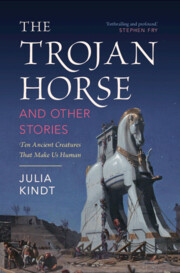
The Trojan Horse and Other Stories
- Ten Ancient Creatures That Make Us Human
-
- Published online:
- 09 November 2023
- Print publication:
- 11 January 2024
5 - Etched into Collective Memory
- from Part II - The History of the Constitution
-
- Book:
- The Story of Constitutions
- Published online:
- 19 October 2023
- Print publication:
- 02 November 2023, pp 82-97
-
- Chapter
- Export citation
5 - The Classical and Biblical in Dialogue
- from Part II - Making the Past Visible
-
-
- Book:
- Victorian Engagements with the Bible and Antiquity
- Published online:
- 28 September 2023
- Print publication:
- 12 October 2023, pp 122-158
-
- Chapter
- Export citation
Connecting the ancient Afro-Eurasian world
-
- Journal:
- Journal of Global History / Volume 18 / Issue 3 / November 2023
- Published online by Cambridge University Press:
- 09 October 2023, pp. 329-342
- Print publication:
- November 2023
-
- Article
-
- You have access
- Open access
- HTML
- Export citation
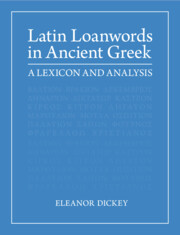
Latin Loanwords in Ancient Greek
- A Lexicon and Analysis
-
- Published online:
- 25 May 2023
- Print publication:
- 15 June 2023
2 - The Albanians in the Middle Ages, 500–1500
- from Part I - Between Regional Self-Will and Imperial Rule
-
- Book:
- A Concise History of Albania
- Published online:
- 18 October 2022
- Print publication:
- 29 September 2022, pp 23-56
-
- Chapter
- Export citation
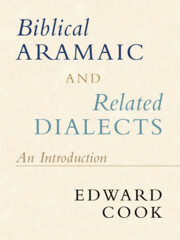
Biblical Aramaic and Related Dialects
- An Introduction
-
- Published online:
- 08 September 2022
- Print publication:
- 29 September 2022
-
- Textbook
- Export citation
Introduction
-
- Book:
- A Concise History of Veterinary Medicine
- Published online:
- 11 August 2022
- Print publication:
- 25 August 2022, pp 1-12
-
- Chapter
- Export citation
3 - Decoding the Heavens: The Antikythera Machine
-
-
- Book:
- Enigmas
- Published online:
- 01 September 2022
- Print publication:
- 18 August 2022, pp 58-81
-
- Chapter
- Export citation
Introduction
-
- Book:
- Believing in Dante
- Published online:
- 10 June 2022
- Print publication:
- 30 June 2022, pp 1-21
-
- Chapter
- Export citation
Chapter 3 - Protean Oceans
- from Part I - Fractured Foundations
-
-
- Book:
- Race in American Literature and Culture
- Published online:
- 26 May 2022
- Print publication:
- 16 June 2022, pp 41-56
-
- Chapter
- Export citation
Chapter 1 - Introduction
-
- Book:
- Untangling Blackness in Greek Antiquity
- Published online:
- 12 April 2022
- Print publication:
- 12 May 2022, pp 1-28
-
- Chapter
- Export citation
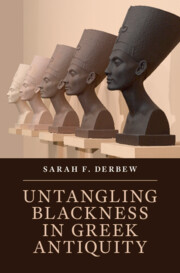
Untangling Blackness in Greek Antiquity
-
- Published online:
- 12 April 2022
- Print publication:
- 12 May 2022
Introduction
-
- Book:
- The Christian Invention of Time
- Published online:
- 13 January 2022
- Print publication:
- 03 February 2022, pp 1-16
-
- Chapter
- Export citation
An Historical Introduction to the Right to Life
-
- Book:
- The Right to Life under International Law
- Published online:
- 02 September 2021
- Print publication:
- 23 September 2021, pp 1-6
-
- Chapter
- Export citation
Altered States: Cultural Pluralism and Psychosis in Ancient Literary Receptions
-
-
- Book:
- Reception in the Greco-Roman World
- Published online:
- 05 June 2021
- Print publication:
- 27 May 2021, pp 1-20
-
- Chapter
- Export citation
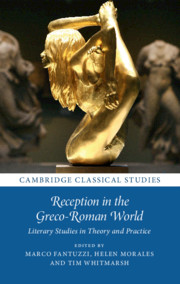
Reception in the Greco-Roman World
- Literary Studies in Theory and Practice
-
- Published online:
- 05 June 2021
- Print publication:
- 27 May 2021
Introduction
-
- Book:
- Magic, Science, and Religion in Early Modern Europe
- Published online:
- 22 January 2021
- Print publication:
- 28 January 2021, pp 1-12
-
- Chapter
- Export citation



